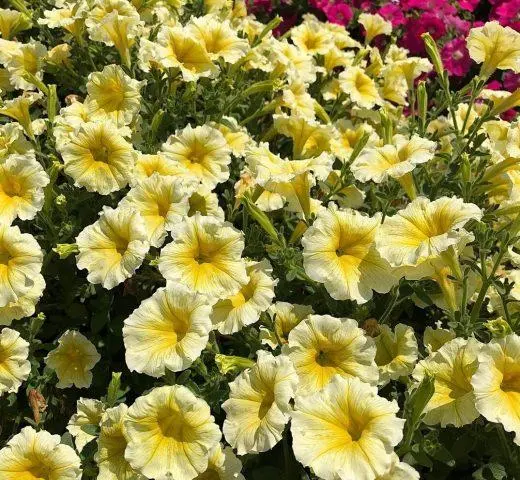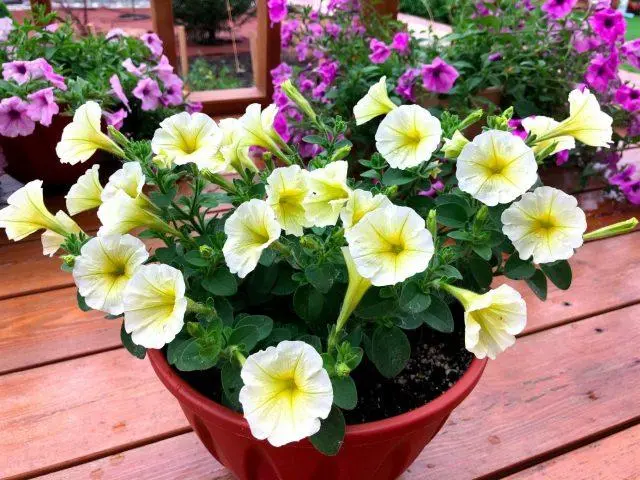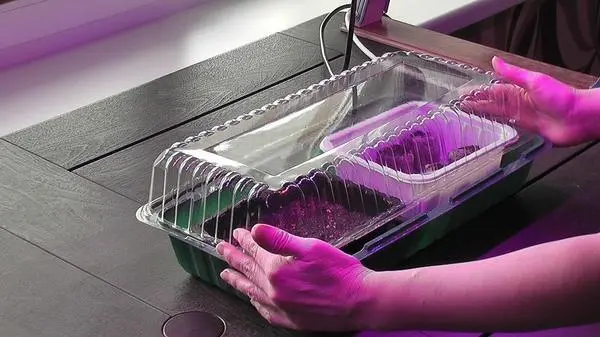Contents
Petunia Fulvia is a long-awaited novelty from breeders who have created a hybrid that has not only excellent decorative qualities, but also outstanding endurance. The ability of the plant to adapt to extreme temperature changes has already been appreciated by many lovers of this culture.
Description of Petunia Fulvia
Petunia is a beautifully flowering perennial plant. However, for ornamental purposes, it is grown as an annual.
Petunia hybrid Fulvia F1 of the Italian series with unusual lemon-yellow flowers is famous for being able to grow in the temperature range from -5 ° to + 40 ° С. If the thermometer falls below zero, the plant only slows down growth.
The stems of the Fulvia hybrid are creeping, strongly branching, due to which they are evenly covered with peduncles. In open ground, the plant covers the soil with a continuous carpet. Petunia is grown in pots as an ampelous culture. The length of its shoots can reach 30 cm or more, the diameter of the bush often exceeds 60 cm. The height of the plant is usually no more than 30 cm.
On short peduncles, simple funnel-shaped flowers are formed from five fused petals. Their diameter is 7–8 cm. The color of the corolla gradually changes from rich yellow in the center of the flower to pale lemon at the edges.

Lemon yellow Fulvia petunias look elegant and noble
Male flowers are sterile, which ensures long-term flowering throughout the season – from early spring to mid-autumn.
Advantages and disadvantages
Cascading petunia Fulvia with an unusual color of flowers can revive any floral ensemble. Many gardeners prefer to use this variety in single plantings or in combination with other varieties of petunias.

Fulvia looks great in pots and hanging planters
The undoubted advantages of the hybrid include the following features:
- unusual for petunias lemon-yellow color of flowers;
- abundant lush flowering;
- high adaptive capabilities of the plant, allowing it to endure significant temperature changes;
- continuous flowering throughout the season;
- strong but flexible shoots.
Disadvantages of this variety:
- infertility of male flowers, which does not allow obtaining seed.
Growing Petunia Fulvia from Seeds
It is possible to grow Fulvia petunia from seeds if you take into account a few nuances and follow all the rules.
Forcing seedlings of this hybrid can be done from February to April. The dates are chosen in such a way as to plant plants in open ground that have reached the age of 11–13 weeks.
For sowing seeds, it is necessary to prepare a light, loose soil with a neutral or slightly acidic reaction. The soil and container must be disinfected.
Seeds are mixed with sand, sown and watered with a spray bottle. They do not need additional deepening. The box is covered with glass or transparent film and placed in a well-lit room with an air temperature of +25°C.
About a week later, when the first shoots appear, the sprouts are aired twice a day, and the air temperature is gradually lowered to + 20 ° C.
Seedlings need to provide additional lighting. The first shoots need lighting almost around the clock, grown shoots can be transferred to a 12-hour daylight hours.

To illuminate petunia seedlings, it is best to use a special fitolamp
It is desirable to water the seedlings in a pan – this is the easiest way to ensure a moisture balance and not damage the tender shoots.
If the forcing of seedlings occurs in a poor substrate, it is necessary to produce root and foliar top dressing.
When the seedlings have 2-3 pairs of true leaves, the seedlings swoop down.
Two weeks before planting in open ground, the seedlings gradually begin to harden, taking them out into the air.
Features of landing
Petunia seedlings are transplanted into open ground in May-June. In order for Fulvia to reach its full potential, you need to choose sunny areas with fertile soil, enriched with humus or compost.
Plants are planted in such a way that the distance between them is at least 45–50 cm. The volume of the pot for one flower should be about 12–15 liters. Landing is carried out in cloudy weather. Plants are watered abundantly, removed from the container and transferred to a prepared hole. The soil is well shed and mulched, and the seedlings are protected from direct sunlight.
Care instructions
In order for Petunia Fulvia to please the eye all summer, it is necessary to provide her with proper care:
- watering, especially during the dry season;
- weeding and loosening the soil;
- top dressing with complex fertilizers.
Petunia will bloom profusely and for a long time if dried flowers are removed in time, which stimulates the formation of new buds.
Diseases and pests
With good care, adult petunias rarely infect diseases and pests, however, weakened plants may suffer from late blight, chlorosis, aphids, thrips, or slugs. For seedlings, the greatest danger is the black leg, which can destroy seedlings in a very short time.
Conclusion
Petunia Fulvia is an excellent choice for landscaping various areas. This hybrid is suitable both for growing in open ground and for decorating balconies and terraces. Unusual colors, long lush flowering and special resistance to changes in ambient temperature make this variety of petunia a welcome guest in home gardens.









